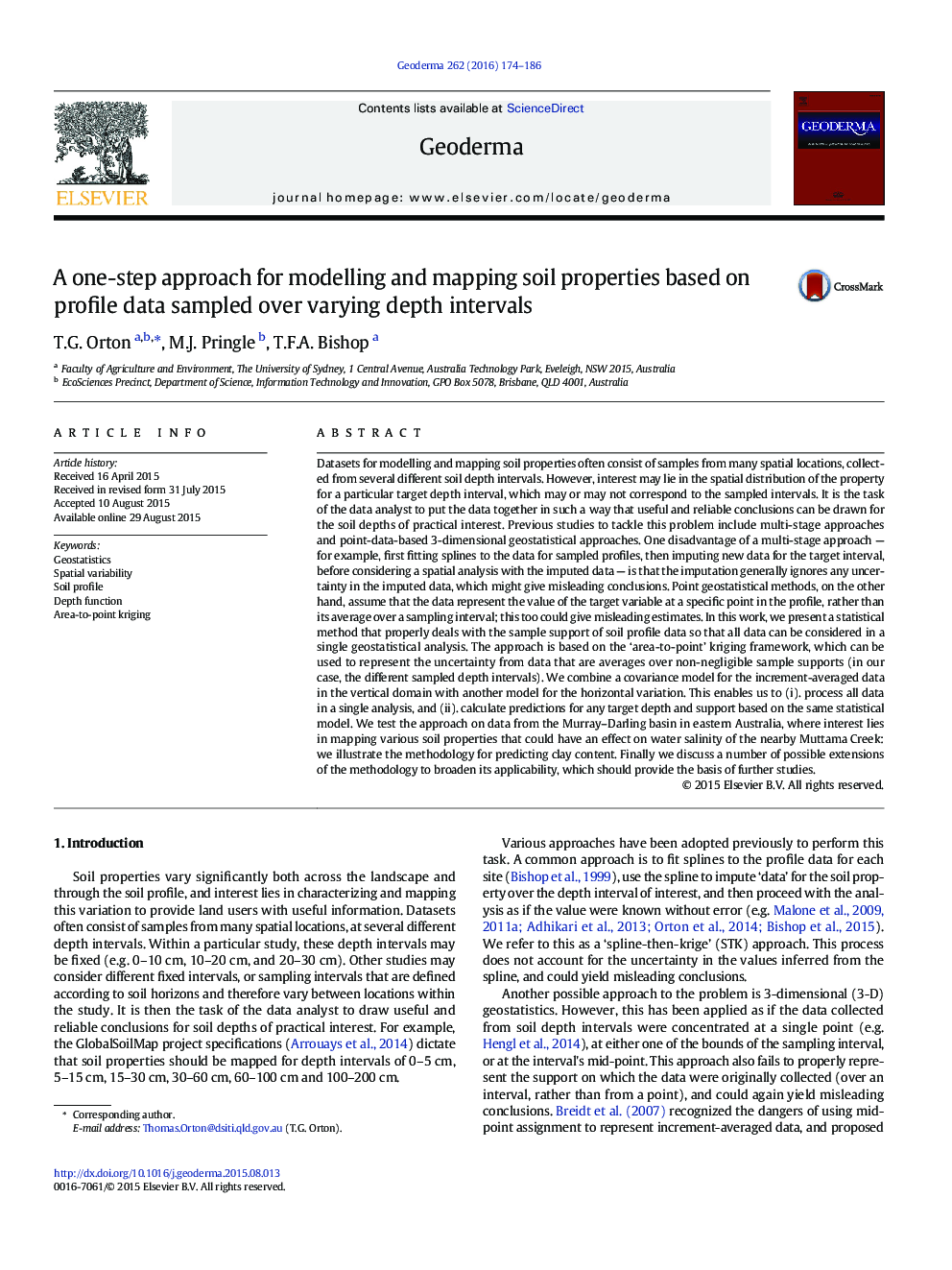| کد مقاله | کد نشریه | سال انتشار | مقاله انگلیسی | نسخه تمام متن |
|---|---|---|---|---|
| 4573062 | 1629454 | 2016 | 13 صفحه PDF | دانلود رایگان |
• Datasets often consist of samples collected over different depth intervals.
• We present a method to process data for all depth intervals in a single geostatistical analysis.
• Uncertainty due to different sampling intervals is accounted for.
• We fit a 3-D covariance model in which variances depend on depth.
• Methods are successfully applied to map clay content.
Datasets for modelling and mapping soil properties often consist of samples from many spatial locations, collected from several different soil depth intervals. However, interest may lie in the spatial distribution of the property for a particular target depth interval, which may or may not correspond to the sampled intervals. It is the task of the data analyst to put the data together in such a way that useful and reliable conclusions can be drawn for the soil depths of practical interest. Previous studies to tackle this problem include multi-stage approaches and point-data-based 3-dimensional geostatistical approaches. One disadvantage of a multi-stage approach — for example, first fitting splines to the data for sampled profiles, then imputing new data for the target interval, before considering a spatial analysis with the imputed data — is that the imputation generally ignores any uncertainty in the imputed data, which might give misleading conclusions. Point geostatistical methods, on the other hand, assume that the data represent the value of the target variable at a specific point in the profile, rather than its average over a sampling interval; this too could give misleading estimates. In this work, we present a statistical method that properly deals with the sample support of soil profile data so that all data can be considered in a single geostatistical analysis. The approach is based on the ‘area-to-point’ kriging framework, which can be used to represent the uncertainty from data that are averages over non-negligible sample supports (in our case, the different sampled depth intervals). We combine a covariance model for the increment-averaged data in the vertical domain with another model for the horizontal variation. This enables us to (i). process all data in a single analysis, and (ii). calculate predictions for any target depth and support based on the same statistical model. We test the approach on data from the Murray–Darling basin in eastern Australia, where interest lies in mapping various soil properties that could have an effect on water salinity of the nearby Muttama Creek: we illustrate the methodology for predicting clay content. Finally we discuss a number of possible extensions of the methodology to broaden its applicability, which should provide the basis of further studies.
Journal: Geoderma - Volume 262, 15 January 2016, Pages 174–186
